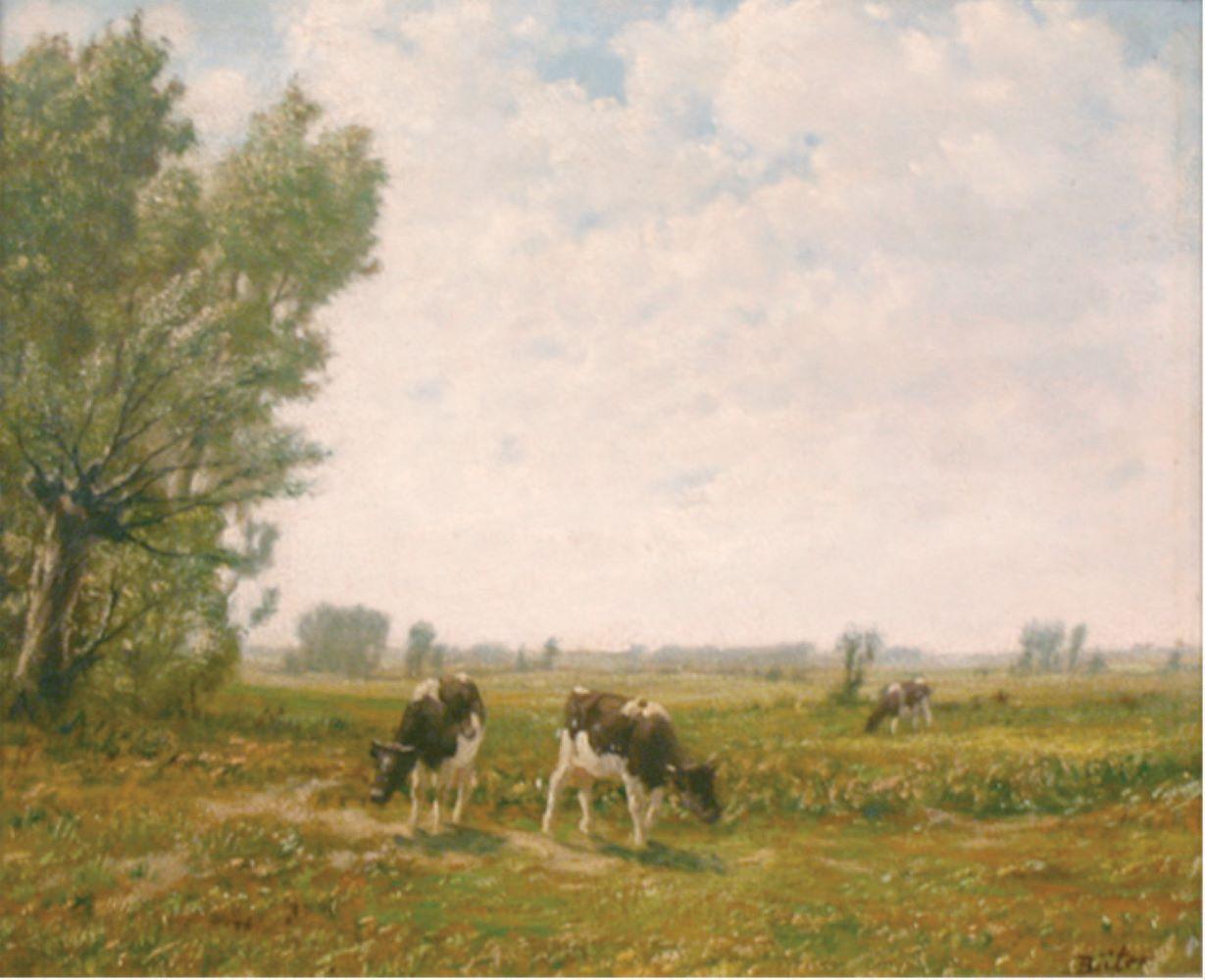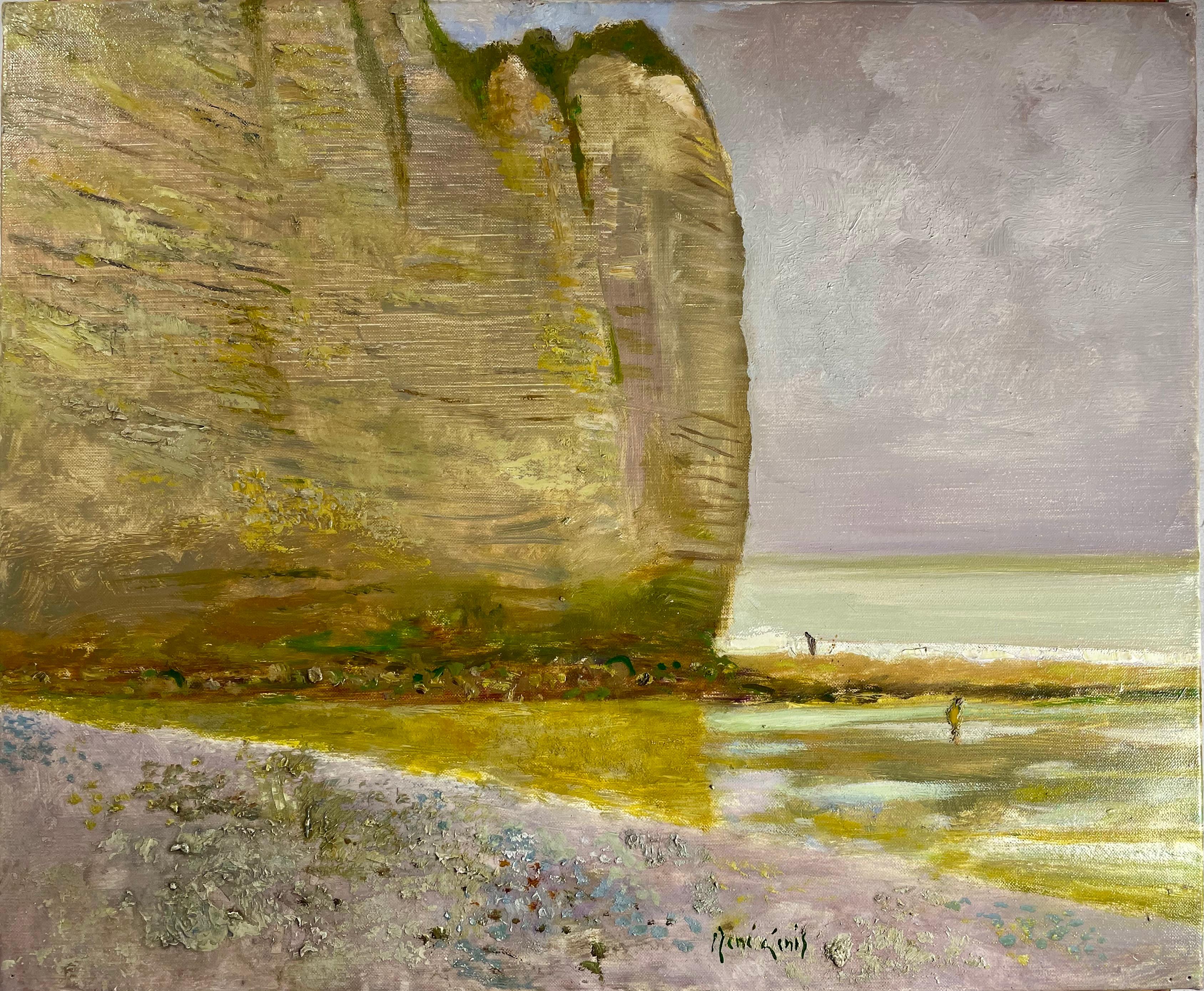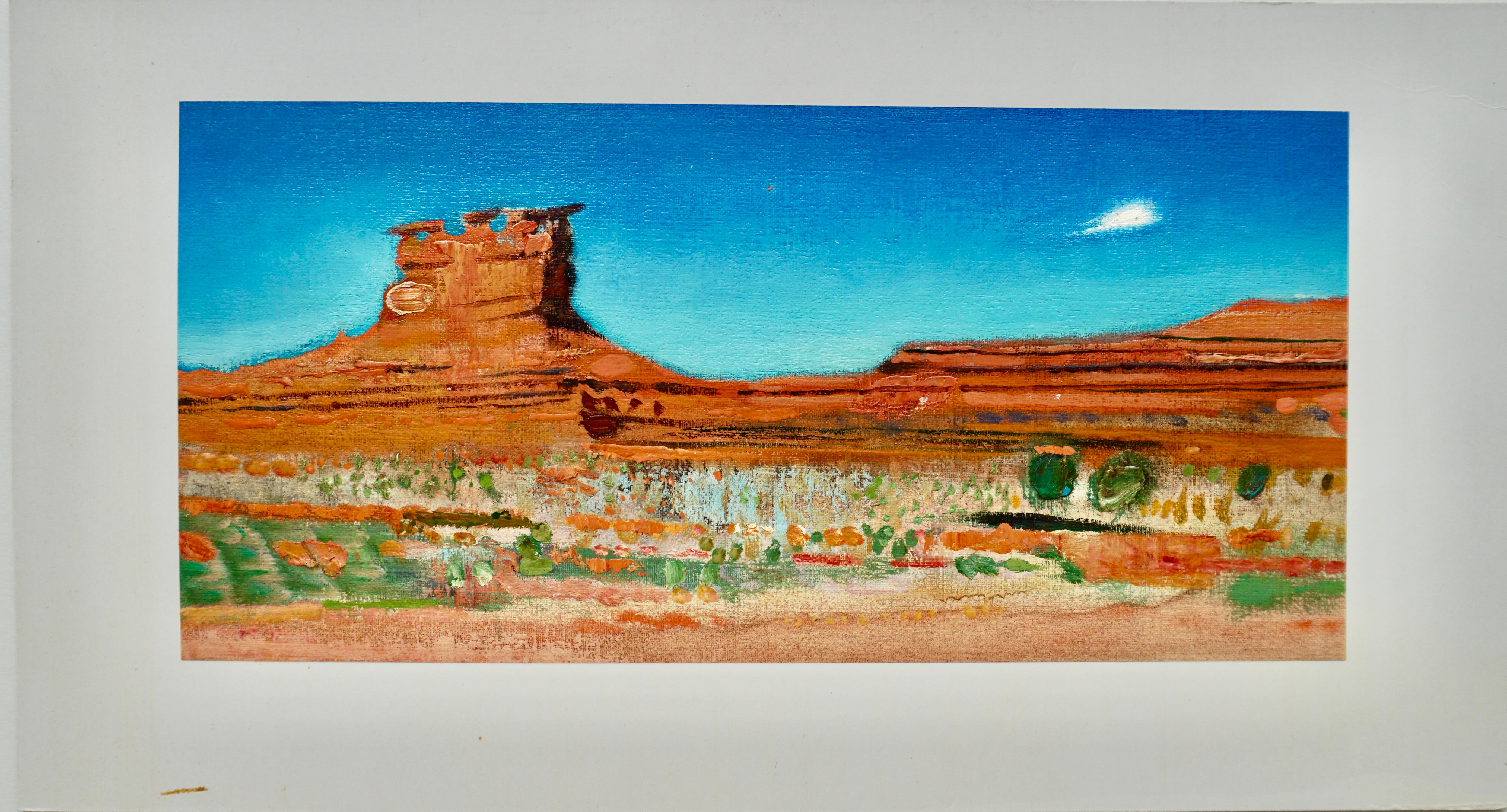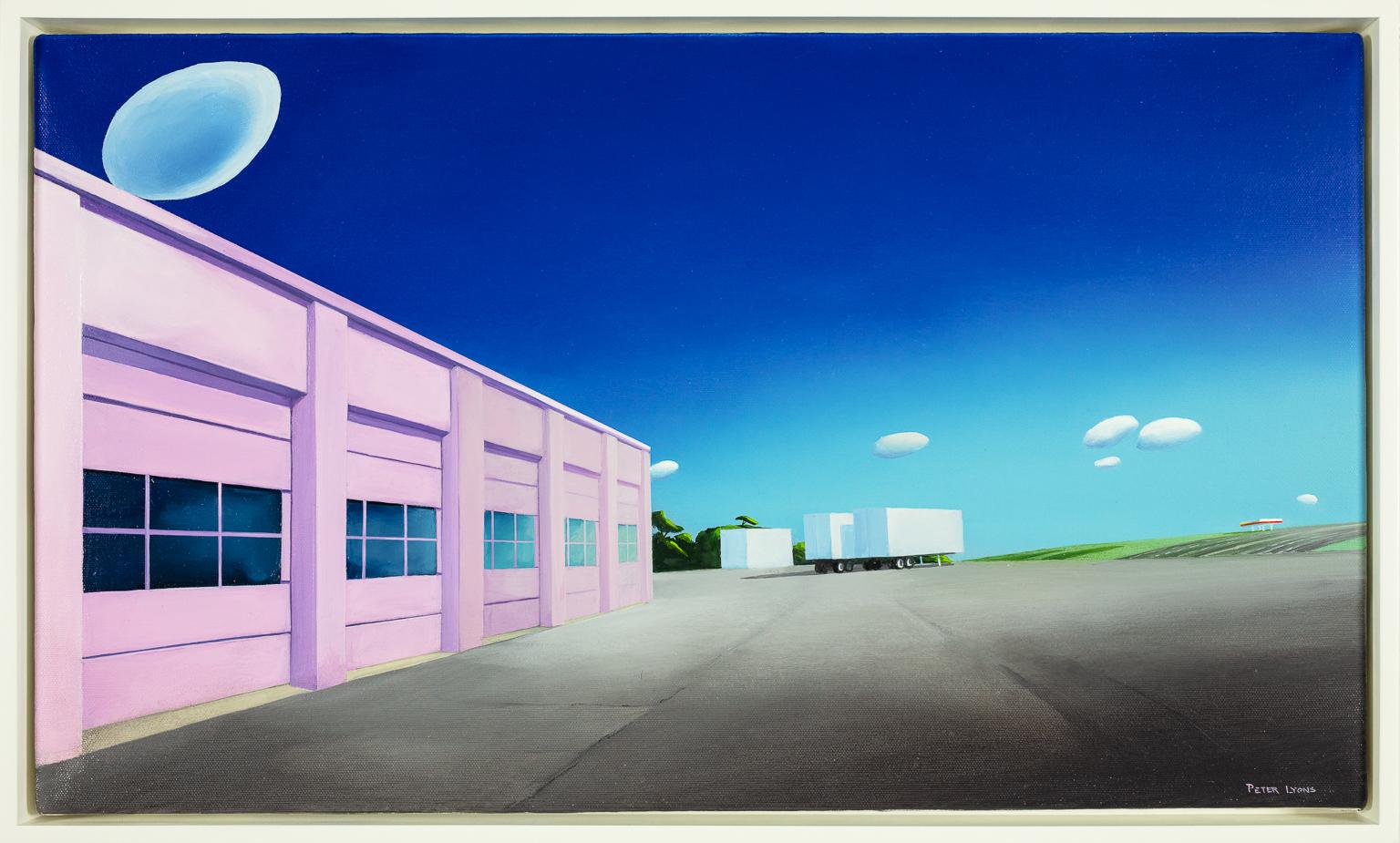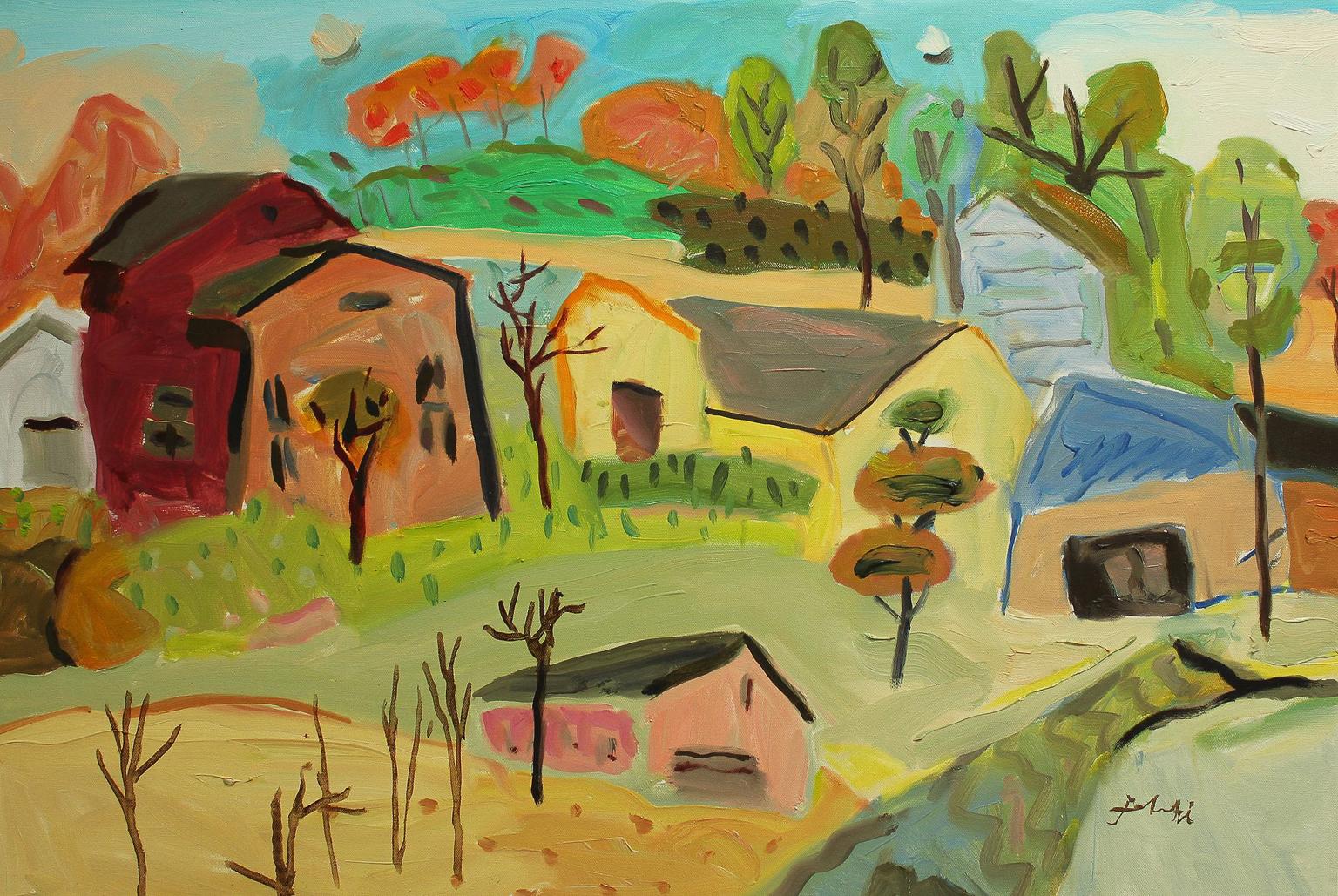Items Similar to View of the Hongs, Canton
Want more images or videos?
Request additional images or videos from the seller
1 of 10
19th Century Chinese schoolView of the Hongs, CantonCirca 1850
Circa 1850
About the Item
Sought by collectors worldwide, art and artifacts showing an early western presence in the Orient boomed with the opening of the China Trade by way of the sailing ship. The surviving paintings which capture the important Chinese harbors of the 18th and 19th Centuries with western merchants are at the top of such a list of desirable items.
Showing the American, British and Danish flags over their respective factory houses, the Pearl River traffic bustles beneath the shore of Canton city’s edge. Foreign merchants and captains had to anchor off Whampoa, down the river, and travel by junk, sampan or other transport operated by the local mariners, using a wide variety of propulsion, as shown. No firearms, women and very few average crewmen were allowed to travel upriver to Canton. Though all seemed to make their way upriver anyway, if in secret.
This example, showing great coloration and detail, represents the height of the international tea trade and the period of record sailings by the clipper ships. No less than forty people occupy the many vessels on the river, all playing a part in the vast trade.
A large decorated cruising barge floats in the background as musicians play traditional Chinese instruments accompanied by a singer, likely serenading guests with popular selections from Peking-style operas. An important looking official stands on the high rear deck of his ship as many oars propel him forward. A fisherman’s single oar craft overloaded with fish, navigates through the larger ships, making his way to sell the catch.
Note the shoreline’s wealth of trees and foliage between the hongs and river, mostly planted in the 1840s by an American indemnity fund company. At this point, there is even a Western church before the British factory, at the end of Hog’s Road, which was built in 1847. A second great Canton fire in 1856 destroyed most of this area, and it was never fully rebuilt. Paintings like this form an important and historic record of a time and way of life now lost to history.
Set in its original gilt Chinese Chippendale frame.
Sight Size: 11 x 17 1/8 Inches
Vallejo Gallery features the finest in marine and maritime antiques, artifacts and fine art including pieces of naval and yachting history including the America’s Cup, the age of the clipper ships and merchant ships through to the great passenger and ocean liners of the early 20th Century. We are always seeking to purchase the finest quality maritime and marine themed art.
- Creator:19th Century Chinese school (1775 - 1900, Chinese)
- Creation Year:Circa 1850
- Dimensions:Height: 14.75 in (37.47 cm)Width: 21 in (53.34 cm)
- Medium:
- Period:
- Condition:
- Gallery Location:Costa Mesa, CA
- Reference Number:1stDibs: LU2139211254452
About the Seller
No Reviews Yet
Vetted Seller
These experienced sellers undergo a comprehensive evaluation by our team of in-house experts.
Established in 1972
1stDibs seller since 2022
5 sales on 1stDibs
Typical response time: 1 to 2 days
- ShippingRetrieving quote...Ships From: Costa Mesa, CA
- Return PolicyA return for this item may be initiated within 7 days of delivery.
More From This SellerView All
- The Five-Masted Schooner ELINOR H.Located in Costa Mesa, CAThis attractive portrait features the five-masted schooner ELINOR H. at full sail in an active sea. The ship has crisp lines and a sharp sense of detail, likely because it was painte...Category
1920s Other Art Style Paintings
MaterialsCanvas, Oil, Board
- On the Coast of Holland, Fishing Boat Ready for SeaBy William Edward NortonLocated in Costa Mesa, CAAn interesting homage to the issue of rank amongst the crews and officers of all vessels, a captain is carried to his ready command by one of his subordinates through the ocean surf ...Category
1890s Other Art Style Landscape Paintings
MaterialsCanvas, Oil
- Amercan Merchant Ship in Philadelphia HarborBy Thomas BirchLocated in Costa Mesa, CAThomas Birch is considered one of the earliest American Marine painters of importance both in his own time and historically, forming the foundation of what would become a great American Maritime movement in the successive years of the 19th century. Born in England, Birch started as a landscape painter but after the War of 1812 he turned to marine subjects, taking inspiration from the best of both English and Dutch maritime traditions but refining these techniques into a very recognizable style all his own. The work featured here is a classic of Birch's later period, when he focused specifically on maritime subjects, mainly the busy waterways of Philadelphia Harbor. Here we see one of those scenes- a series of ships plying their trade, all framed by the city as it sits across the Delaware River, with the tall, white spire of what is either Independence Hall or Christ Church to the left of the main vessel. The details of the city are particularly good in this painting, with the wharf building to the left and the long line of buildings all along the shore. The American Merchant Bark at the center of this painting is rendered in excellent detail, from her house flag and pennant, to her rigging and sails, and down to her deck filled with the activity of crewmembers readying the ship to head out, her gilt billet...Category
1840s Other Art Style Paintings
MaterialsCanvas, Oil, Board
- A Day's Sail in New EnglandBy Mauritz Frederick Hendrick de HaasLocated in Costa Mesa, CAAn able sailor guides a fine sloop through the choppy waters of a busy American port in this work by Dutch-American artist Maurtiz DeHaas. Given the sailor's hat, what appears to be ...Category
1860s Realist Paintings
MaterialsOil, Canvas
- The Clipper FLYING FISH in San Francisco BayLocated in Costa Mesa, CAOne of the most exciting races between American clipper ships took place between October, 1852 and January, 1853. The vessels involved were the crack clippers FLYING FISH, JOHN GILPIN and WILD PIGEON. Departing New York, each a few days apart, the three ships met up off Cape Horn and proceeded, often in sight of one another, to fly up the west coast to San Francisco. The JOHN GILPIN gambled by heading farther west into the pacific where a strong northerly got her to San Francisco first. FLYING FISH and WILD PIGEON remained in sight of one another for most of the voyage in their dash up the coast. FLYING FISH arrived a day after GILPIN, but having left New York three days behind her adversary, was declared the winner. This view shows an excellent starboard view of the great FLYING FISH on her entry into San Francisco Bay. The water has superb light and reflection while the Marin headlands show as her backdrop, with the ever-present misty atmosphere of this important California port. A well captured moment of one of the fastest and most powerful 19th century great sailing ships created. Sight Size: 18 x 34 inches Vallejo Gallery...Category
1990s Paintings
MaterialsCanvas, Oil
- British Schooner Anchored at NaplesLocated in Costa Mesa, CAA classic scene of a large mid-Nineteenth Century schooner at rest in the Mediterranean port painted by the Italian countryman Tomaso De Simone. The complete narrative scene around the schooner's broadside is complemented with a British merchant steam/sail ship, local boats and the colorful sky and headland architecture of the ancient city. The vast serenity and unspoiled life of cruising the Mediterranean Ocean...Category
1860s Realist Paintings
MaterialsCanvas, Oil
You May Also Like
- Bernhard ButerLocated in Saint Augustine, FLArtist: Bernhard Buter (1883-1959) German Title: Rhinish Landscape Medium: Oil on Canvas Dimensions: Framed 19” x 21” , Unframed 11 x 13” Bernhard Buter paints agrarian landscapes i...Category
Early 20th Century Realist Landscape Paintings
MaterialsCanvas, Oil
- "Les Falaise Normande" (The Cliffs Of Normand)By René GenisLocated in Berlin, MDRene Genis (French 1922-2004) “Les Falaise Normande” / The Cliffs of Normand. A sea scape with high cliffs, the beach, and two fishermen. The cliffs are in browns, tans and olives a...Category
1990s French School Landscape Paintings
MaterialsCanvas, Oil
- "Monument Valley"By René GenisLocated in Berlin, MDRene Genis (French 1922-2004) Monument Valley. 1967. Beautiful oranges, browns, greens against a turquoise blue sky. Oil on canvas, laid on mat. Si...Category
Mid-20th Century Landscape Paintings
MaterialsOil, Canvas
- Early oil depicting the Great Fire of LondonLocated in London, GBThe Great Fire of London in September 1666 was one of the greatest disasters in the city’s history. The City, with its wooden houses crowded together in narrow streets, was a natural fire risk, and predictions that London would burn down became a shocking reality. The fire began in a bakery in Pudding Lane, an area near the Thames teeming with warehouses and shops full of flammable materials, such as timber, oil, coal, pitch and turpentine. Inevitably the fire spread rapidly from this area into the City. Our painting depicts the impact of the fire on those who were caught in it and creates a very dramatic impression of what the fire was like. Closer inspection reveals a scene of chaos and panic with people running out of the gates. It shows Cripplegate in the north of the City, with St Giles without Cripplegate to its left, in flames (on the site of the present day Barbican). The painting probably represents the fire on the night of Tuesday 4 September, when four-fifths of the City was burning at once, including St Paul's Cathedral. Old St Paul’s can be seen to the right of the canvas, the medieval church with its thick stone walls, was considered a place of safety, but the building was covered in wooden scaffolding as it was in the midst of being restored by the then little known architect, Christopher Wren and caught fire. Our painting seems to depict a specific moment on the Tuesday night when the lead on St Paul’s caught fire and, as the diarist John Evelyn described: ‘the stones of Paul’s flew like grenades, the melting lead running down the streets in a stream and the very pavements glowing with the firey redness, so as no horse, nor man, was able to tread on them.’ Although the loss of life was minimal, some accounts record only sixteen perished, the magnitude of the property loss was shocking – some four hundred and thirty acres, about eighty per cent of the City proper was destroyed, including over thirteen thousand houses, eighty-nine churches, and fifty-two Guild Halls. Thousands were homeless and financially ruined. The Great Fire, and the subsequent fire of 1676, which destroyed over six hundred houses south of the Thames, changed the appearance of London forever. The one constructive outcome of the Great Fire was that the plague, which had devastated the population of London since 1665, diminished greatly, due to the mass death of the plague-carrying rats in the blaze. The fire was widely reported in eyewitness accounts, newspapers, letters and diaries. Samuel Pepys recorded climbing the steeple of Barking Church from which he viewed the destroyed City: ‘the saddest sight of desolation that I ever saw.’ There was an official enquiry into the causes of the fire, petitions to the King and Lord Mayor to rebuild, new legislation and building Acts. Naturally, the fire became a dramatic and extremely popular subject for painters and engravers. A group of works relatively closely related to the present picture have been traditionally ascribed to Jan Griffier...Category
17th Century Old Masters Landscape Paintings
MaterialsOil, Canvas
- White FarmBy Zygmund JankowskiLocated in Gloucester, MAZygmund Jankowski (1925–2009) painted traditional subjects with exuberant irreverence for traditional rules of color, composition, and perspective. He disparaged imitation and deligh...Category
1980s Contemporary Landscape Paintings
MaterialsCanvas, Oil
- Autumn Landscape with PurpleBy Zygmund JankowskiLocated in Gloucester, MAZygmund Jankowski (1925–2009) painted traditional subjects with exuberant irreverence for traditional rules of color, composition, and perspective. He disparaged imitation and deligh...Category
1980s Contemporary Landscape Paintings
MaterialsCanvas, Oil
Recently Viewed
View AllMore Ways To Browse
Art Of The 19th Century
Antique View
18th Century And 19th Century
Great Art Of The 19th Century
19th Century Frame Large
19th Century Ship
Antique 19th Century Painting
Antique 19th Century Paintings
Items In China
Large Paintings 19th Century
19th Century Cup
History Of China
Nevers 19th
Chinese School
Plants 19th Century
British 19th Century Painting
Chinese School Art
Large Chinese 19th
